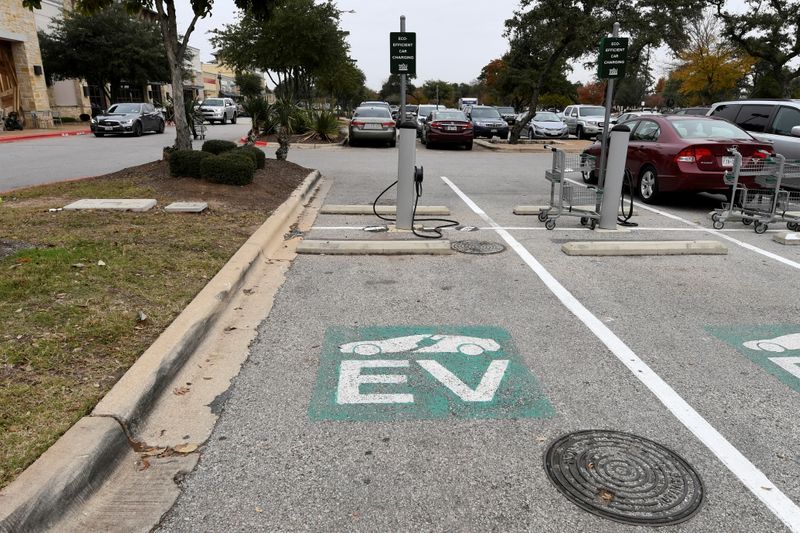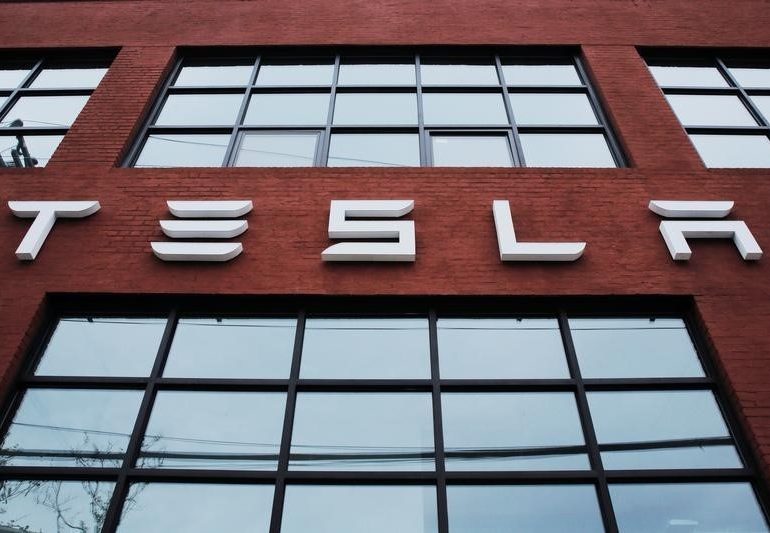 © Reuters. FILE PHOTO: An electric vehicle (EV) fast charging station is seen in the parking lot of a Whole Foods Market in Austin, Texas, U.S., December 14, 2016. REUTERS/Mohammad Khursheed
© Reuters. FILE PHOTO: An electric vehicle (EV) fast charging station is seen in the parking lot of a Whole Foods Market in Austin, Texas, U.S., December 14, 2016. REUTERS/Mohammad KhursheedBy Subrat Patnaik and Chavi Mehta
(Reuters) – President Joe Biden’s plan to spend billions on charging networks in the U.S. could encourage more Americans to buy electric vehicles, giving General Motors (NYSE:) and Ford Motor (NYSE:) much needed fuel in the battle against Tesla (NASDAQ:) Inc.
The bipartisan $1.2 trillion infrastructure framework, includes $7.5 billion spending plans to boost EV charging stations. However, details of the plan still need to be finalized and any bill must be passed by both houses of Congress.
“It’s necessary for the consumers to get better infrastructure to buy EVs and it might be good for General Motors and Ford as well as Stellantis,” said Frank Schwope, automotive analyst at NORD/LB.
The funds are half of $15 billion Biden had sought for EV charging stations. In a 2018 report, consultancy firm McKinsey estimated that the United States will need about $11 billion of capital investment by 2030 to deploy the 13 million chargers needed for the country’s EVs.
“Effective legislation should include investments in charging infrastructure, particularly in urban areas and along highway corridors, that will help give consumers even more confidence to buy electric,” GM said in a statement.
Tesla’s fast supercharging network has given it a competitive edge. Meanwhile, other carmakers have formed alliances or invested in startups for networks.
The ambitious move is timely as automakers rush new EV entrants to market and as companies put in place aggressive carbon and emissions targets to save the environment.
EV sales made up only 2% of total car sales in 2020 in the United States.
There are two kinds of public EV charging stations: the slower Level 2 chargers, which take about an hour of charging for 10 miles (16.09 km) to 20 miles (32.19 km); and the DC Fast chargers that can add 60 miles to 80 miles of range in a 20-minute charge.
Volkswagen (DE:)’s unit Electrify America said it will have 800 charging stations with more than 3,500 ultra-fast chargers across the United States and was encouraged by the spending plans.
Other companies such as Blink (O:), EVgo and ChargePoint are also building out charging networks across the country, but at a much slower pace than their counterparts in China, where there is strong government support for EVs.
There are about 884,000 charging stations in China as of May compared to just about 42,000 in the United States.
But it will take a lot more than charging stations to lure Americans to buy EVs. A Cox Automotive study said people are hesitant to buy EVs due to range anxieties, high price tags and weak charging infrastructure.
“It (the infrastructure) can give a push to people, but you have to differ between the people in the big cities and people on the countryside,” automotive analyst Schwope said.
“On the countryside, you need much more mileage than in the cities. The push will come especially in the big cities.”
Fusion Media or anyone involved with Fusion Media will not accept any liability for loss or damage as a result of reliance on the information including data, quotes, charts and buy/sell signals contained within this website. Please be fully informed regarding the risks and costs associated with trading the financial markets, it is one of the riskiest investment forms possible.

